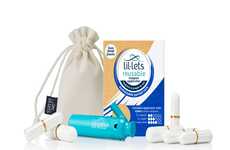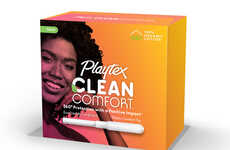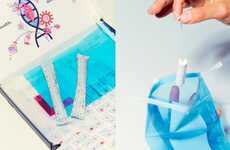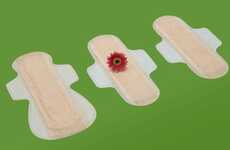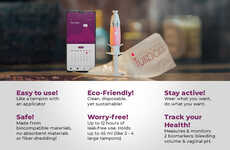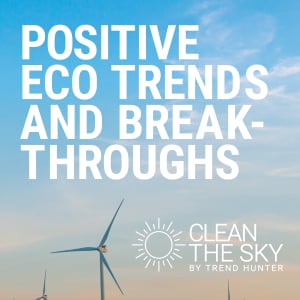
Feminine Hygiene Products are Being Used to Identify Toxins in Rivers
Amelia Roblin — April 1, 2015 — Eco
References: sheffield.ac.uk & magazine.good.is
Some people have been clever enough to find alternate uses for feminine hygiene products in the sphere of health and first aid; but recently, a tampon test has been initiated within the environmental realm as well. Scientists in the UK are using these untreated bundles of cotton to soak up optical brighteners in creeks, rivers and lakes to determine the instances and levels of contamination.
Feminine hygiene products are proving to be great absorbent tools for investigating faults in the water treatment process; however, these goods were not actually designed for the job. There's an opportunity here for companies within the broader industry of tissue and cotton products to create purpose-made sponges for investigating the detergents and chemicals that are making it through the system. These would then be bathed in UV light to determine the severity of toxicity.
Feminine hygiene products are proving to be great absorbent tools for investigating faults in the water treatment process; however, these goods were not actually designed for the job. There's an opportunity here for companies within the broader industry of tissue and cotton products to create purpose-made sponges for investigating the detergents and chemicals that are making it through the system. These would then be bathed in UV light to determine the severity of toxicity.
Trend Themes
1. Alternative Uses for Feminine Hygiene Products - Creating purpose-made sponges for investigating detergents and chemicals that make it through the water treatment system.
2. Environmental Testing with Tampons - Using tampons to identify instances and levels of contamination in rivers, creeks, and lakes.
3. Absorbent Tools for Water Treatment Investigation - Developing absorbent tools made from tissue and cotton products to investigate faults in the water treatment process.
Industry Implications
1. Tissue and Cotton Products - Creating purpose-made sponges for investigating detergents and chemicals that make it through the water treatment system.
2. Environmental Testing - Using tampons to identify instances and levels of contamination in rivers, creeks, and lakes.
3. Water Treatment - Developing absorbent tools made from tissue and cotton products to investigate faults in the water treatment process.
2.3
Score
Popularity
Activity
Freshness


